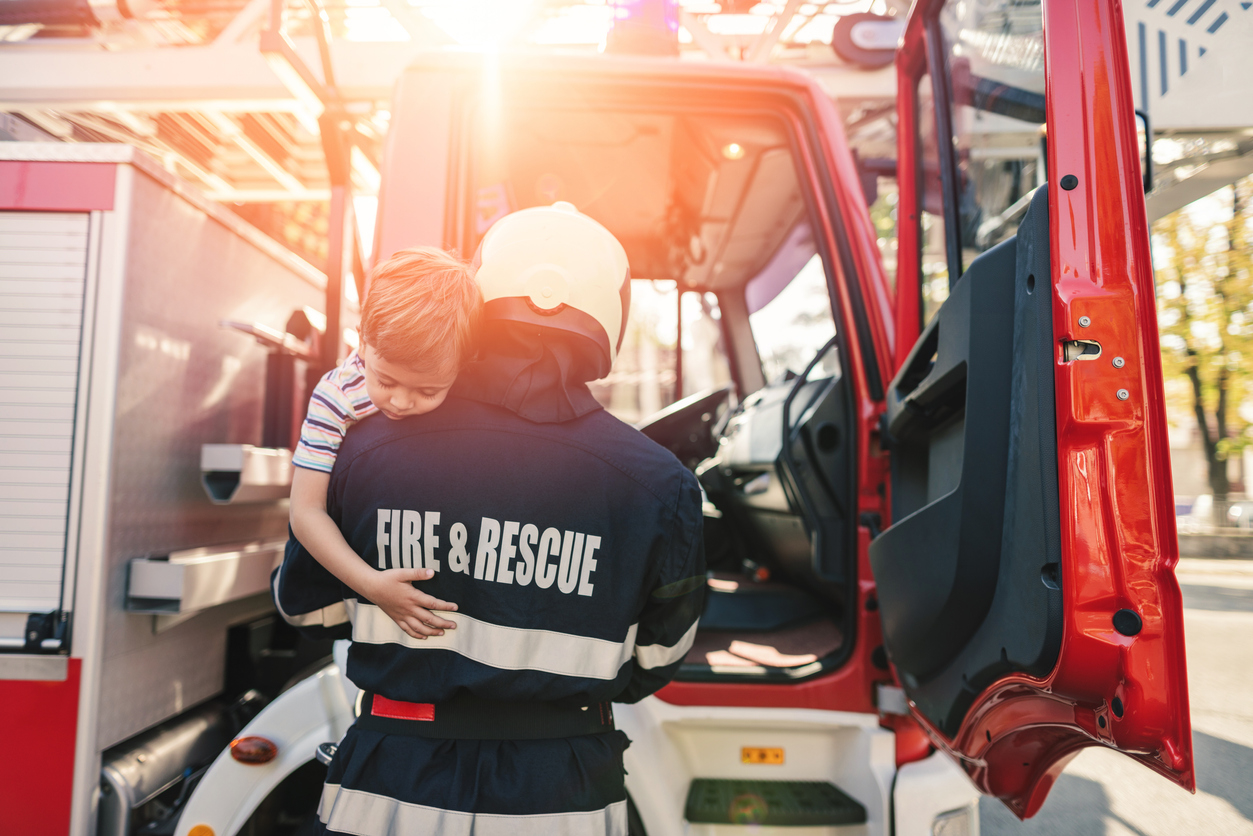Commitment + Clinical Leadership = Better Outcomes

Recognizing Our First Responders
Today, we’re thanking our First Responders!
Our First Responders ensure public safety, respond to danger, and treat the injured. They deserve our appreciation not just a single day or month, but throughout the year.
These professionals and volunteers work all day every day to maintain the health and safety of all our communities. Here’s a few facts about the First Responders and some facts about their contributions to our community.
EMTs and Paramedics
Currently, there are about 265,200 paramedics and Emergency Medical Technicians (EMTs) working in the United States.1 You’ll find them in ambulances, fire trucks, medical helicopters, and hospitals.
EMTs are the lifesavers who arrive at the scene whenever disaster strikes or a medical emergency takes place. When 911 is called, these men and women are some of the first to arrive at the scene.
EMTs are the most common provider of emergency medical services, including CPR and first aid. Aspiring EMTs need to obtain a high school diploma or GED, complete a CPR certification, and an EMT training program.2
Paramedics receive further education in areas such as anatomy, medications, and more.3 Paramedics are ready to perform more advanced care if needed during transportation to the hospital or on site at the accident. This care may include IVs and administering drugs.
Paramedics complete basic and advanced EMT training. College programs for paramedics generally take two years and prepare them for emergency medical services.
Both EMTs and paramedics need state certification to work. The most common exam is the National Registry of Emergency Medical Technicians (NREMT) exam, unless a state requires a specific one.4
Firefighters
There are over 300,000 firefighters working in the United States today.5 These men and women responders are most commonly known for fighting fires (hence the name), but they also have other responsibilities as well.6
Firefighters are extensively trained to control and suppress fires that may harm property, the environment, and especially lives.
Firefighters’ other duties include preventative measures, first aid, investigations of fires, fire cleanup, and more.
There are numerous other activities firefighters have to do that the public doesn’t necessarily see. They take the time to walk through construction in order to better understand and plan for mitigating emergencies in such buildings.7
To become a firefighter, one would need to pass a written exam and a Candidate Physical Ability Test (CPAT) before beginning training. Becoming an EMT is often required of firefighters.6
A fire academy offers training and hands-on work. There are even opportunities to expand your knowledge as a firefighter, such as fire science degrees in college.
Police
As of 2019, there are over 600,000 police officers working in our country today.8
What a police officer does may depend on where they are located. Some officers may be given specific duties or they may be assigned to a unit with a goal.9
Police officers respond to emergency calls and situations.10 They also provide basic social services including monitoring community health and safety, educating the public about safety issues, and more.
A police officer’s primary role is to ensure a community is abiding by the law.9
Aspiring police officers need to meet the department’s policies they are applying to, and maintain a clean criminal record. A bachelor’s degree may be favored when applying to lower level positions, but it’s generally necessary for advanced law enforcement positions.
Another requirement is passing the entrance exam before enrolling at the police academy. The police academy trains police officers on criminal statues, traffic laws, firearms training, and more.
Saber Healthcare Thanks First Responders
Overall, our community could not properly function without these First Responders. They help keep our community safe and healthy.
If you see a First Responder today, thank them for all they do!
Saber Healthcare is an organization dedicated to providing consultant services to long term care providers. This article is for informational purposes and is not meant to be seen as professional advice. Please consult with a medical expert before relying on the information provided.
Sources
- “EMTs and Paramedics: Job Outlook.” U.S. Bureau of Labor Statistics, bls.gov. September 1, 2020. Accessed September 17, 2020. https://www.bls.gov/ooh/healthcare/emts-and-paramedics.htm#tab-6.
- “EMTs and Paramedics: What EMTs and Paramedics Do.” U.S. Bureau of Labor Statistics, bls.gov. September 1, 2020. Accessed September 17, 2020. https://www.bls.gov/ooh/healthcare/emts-and-paramedics.htm#tab-2.
- “What’s the Difference Between an EMT and a Paramedic?” UCLA Center for Prehospital Care, mednet.ucla.edu. Accessed September 17, 2020. https://www.cpc.mednet.ucla.edu/node/27#:~:text=The%20biggest%20difference%20between%20them,between%201%2C200%20to%201%2C800%20hours.
- “How to Become a Paramedic/EMT: Paramedic Schools and EMT Training.” Learn How to Become, learnhowtobecome.org. Accessed September 17, 2020. https://www.learnhowtobecome.org/paramedic-emt/.
- “U.S. fire department profile.” National Fire Protection Association, nfpa.org. February 2020. Accessed September 17, 2020. https://www.nfpa.org/News-and-Research/Data-research-and-tools/Emergency-Responders/US-fire-department-profile#:~:text=Key%20findings,67%25)%20were%20volunteer%20firefighters..
- “Fire Science Degrees & Firefighter Careers: How to Become a Firefighter.” Learn How to Become, learnhowtobecome.org. Accessed September 17, 2020. https://www.learnhowtobecome.org/firefighter/.
- Prziborowski, Steve. “What does a firefighter actually do?” Fire Rescue 1, firerescue1.com. June 16, 2020. Accessed September 17, 2020. https://www.firerescue1.com/career-1/articles/what-does-a-firefighter-actually-do-RGMXxYXNZu5u1sbE/.
- “Occupational Employment Statistics.” U.S. Bureau of Labor Statistics, bls.gov. July 6, 2020. Accessed September 18, 2020. https://www.bls.gov/oes/current/oes333051.htm.
- “What does a police officer do?” CareerExplorer, careerexplorer.com. Accessed September 18, 2020. https://www.careerexplorer.com/careers/police-officer/#:~:text=Police%20officers%20enforce%20the%20law,in%20service%20to%20the%20public..
10. “Law Enforcement Degrees & Police Careers: How to Become a Police Officer.” Learn How to Become, learnhowtobecome.org. Accessed September 18, 2020. https://www.learnhowtobecome.org/police-officer/.
